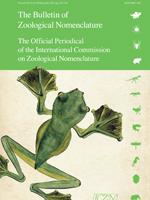The purpose of this application, under Article 81 of the Code, is to conserve the name Saturnia canningi Hutton, 1859, the progenitor of Samia ricini (Jones, 1791). The eri silk moth (Samia ricini) is the third largest source of silk in world commerce. The Himalayan Samia canningi has been demonstrated to be the wild progenitor of S. ricini, which exists only in captivity. Therefore, the two names refer to the same biological species, but the name Phalaena ricini Jones, 1791 has precedence over Saturnia canningi Hutton, 1859. However, both names have been used widely and consistently by authors in the entomological and sericultural literature for over 150 years to refer to the domesticated and wild entities, respectively. The authors propose that the name Saturnia canningi be conserved and added to the Official List of Specific Names in Zoology, so that it can continue to be used when referring to the wild form.
Saturnia canningi Hutton, 1859 (currently Samia canningi; Insecta, Lepidoptera, saturniidae): proposed conservation," The Bulletin of Zoological Nomenclature 70(4), 229-233, (1 December 2013). https://doi.org/10.21805/bzn.v70i4.a6





